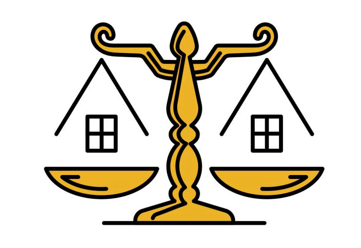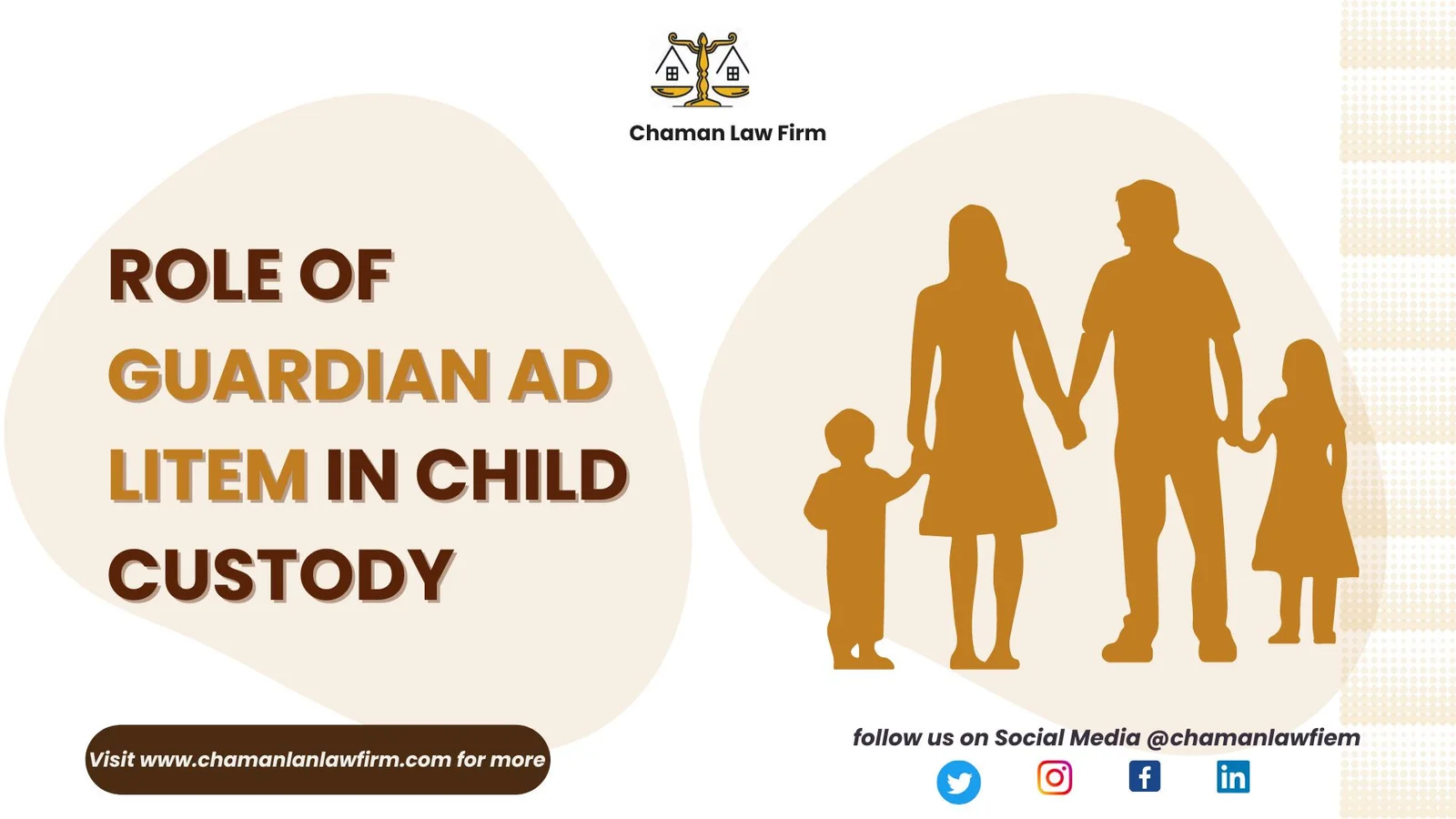Critical Role of a Guardian Ad Litem in Child Custody Cases
OUR STORY
Quality, not quantity
We have made quality our habit. It’s not something that we just strive for – we live by this principle every day.
Introduction
Child custody cases are often complex, emotional, and highly contentious. In such disputes, courts prioritize the child’s best interests. However, determining what truly benefits the child can be challenging, especially when both parents have conflicting views. This is where the role of a Guardian Ad Litem (GAL) becomes crucial.
A Guardian Ad Litem (GAL) is a neutral third party appointed by the court to advocate for the child’s well-being. The GAL’s primary responsibility is to investigate the child’s living conditions, relationships, and overall welfare and provide a well-informed recommendation to the court. Their role significantly influences custody decisions, ensuring that the child’s safety, happiness, and stability are given utmost priority.
This article delves into the critical role of a Guardian Ad Litem in child custody, their legal authority, impact on custody rulings, and how their recommendations shape family law proceedings.
Who is a Guardian Ad Litem?
A Guardian Ad Litem (GAL) is a court-appointed advocate responsible for representing the best interests of a child in legal disputes, particularly in custody battles, parental rights cases, and child welfare proceedings.
Unlike traditional attorneys who represent their client’s wishes, a GAL represents the child’s best interests, which may not always align with what the child or either parent desires. This distinction is crucial in custody cases where parents may be emotionally or legally unfit to make the best decisions for the child.
Qualifications of a Guardian Ad Litem
A Guardian Ad Litem in child custody cases is typically:
A licensed attorney with expertise in family law
A social worker with experience in child welfare
A trained volunteer who has completed specialized courses on child advocacy
In many jurisdictions, Guardians Ad Litem undergo training in child psychology, domestic violence, family law, and conflict resolution to better assess family dynamics.
Legal Framework Governing Guardians Ad Litem in Child Custody
The appointment and role of a Guardian Ad Litem vary depending on jurisdiction. However, several legal principles govern their functions globally.
1. International Laws and Conventions
International agreements such as the United Nations Convention on the Rights of the Child (UNCRC) emphasize the need for child representation in legal matters. Articles 3 and 12 of the UNCRC stress that a child’s best interests must be a primary consideration in all actions concerning them, and they should be given an opportunity to express their views.
2. National Laws on Guardian Ad Litem in Nigeria
In Nigeria, the role of a Guardian Ad Litem in child custody is recognized under:
The Child Rights Act (2003): This Act provides for the appointment of a GAL in cases involving children’s welfare.
The Matrimonial Causes Act: This Act empowers courts to appoint a GAL in cases where custody disputes arise from divorce or separation.
The Family Court of Lagos State Rules: These rules outline procedures for child welfare cases, including the appointment of a GAL.
3. The Role of the Guardian Ad Litem in the Courtroom
The Guardian Ad Litem acts as an independent investigator and advisor to the court. Their findings, presentehttps://chamanlawfirm.com/d in a formal report, influence judicial decisions regarding:
Custody arrangements
Visitation rights
Parental responsibilities
The court may also require the GAL to testify or provide recommendations based on their findings.
The Responsibilities of a Guardian Ad Litem in Child Custody Cases
A Guardian Ad Litem undertakes various responsibilities to ensure that the child’s best interests are protected. These include:
1. Conducting Investigations
A GAL investigates the child’s situation by:
Interviewing both parents
Observing the child’s interactions with each parent
Speaking with teachers, doctors, and relatives
Reviewing medical and school records
This investigation helps the court determine whether either parent poses physical, emotional, or psychological risks to the child.
2. Assessing the Child’s Needs
The GAL evaluates factors such as:
The child’s emotional and physical well-being
The child’s educational needs
The child’s preference (depending on age and maturity)
Courts often give weight to a child’s preference, especially in cases where the child is mature enough to express their views.
3. Providing Reports and Recommendations
The GAL compiles their findings into a detailed report submitted to the court. This report outlines:
The child’s current living conditions
The fitness of each parent
The best custody arrangement for the child
Since judges may not have direct contact with the child, the Guardian Ad Litem’s report significantly impacts the court’s ruling.
4. Monitoring Court Orders
In some cases, the court requires the GAL to monitor compliance with custody arrangements. If a parent violates a court order, the GAL may report the issue and recommend modifications to custody or visitation rights.
The Influence of Guardian Ad Litem Reports on Child Custody Cases
Case Law Examples
1. Re B (A Child) [2013] UKSC 33
In this UK case, a Guardian Ad Litem’s report played a vital role in determining that a mother’s neglect posed a serious risk to the child. Based on the GAL’s recommendations, the court awarded custody to the father.
2. In re Marriage of Guthrie, 2016 (USA)
In this U.S. case, a GAL’s investigation revealed that one parent had a history of substance abuse, leading the court to limit their visitation rights.
3. Umeakuana v. Umeakuana (2021) Nigeria
In this Nigerian case, the Guardian Ad Litem’s report showed that joint custody would be in the child’s best interest, leading the court to establish a shared custody arrangement.
These cases illustrate that a Guardian Ad Litem’s assessment carries significant weight in custody determinations.
Challenges Faced by Guardians Ad Litem
1. Resistance from Parents
Some parents view the Guardian Ad Litem as biased and may refuse to cooperate, hindering investigations.
2. Limited Resources
In jurisdictions with high caseloads, GALs may struggle with inadequate resources and time constraints, impacting their ability to conduct thorough investigations.
3. Emotional Toll
Handling cases involving child abuse, domestic violence, or neglect can be emotionally draining for GALs.
Conclusion: The Indispensable Role of a Guardian Ad Litem in Child Custody Cases
A Guardian Ad Litem in child custody cases plays an indispensable role in ensuring that the best interests of the child are safeguarded. Their investigations, recommendations, and courtroom testimony significantly influence custody decisions, providing the court with a neutral, well-informed perspective.
For parents involved in custody disputes, understanding the role of a GAL can help them navigate the legal process more effectively. Ultimately, the presence of a Guardian Ad Litem ensures that children’s rights, welfare, and well-being remain the central focus of custody proceedings.
NB: This article is not a legal advice, and under no circumstance should you take it as such. All information provided are for general purpose only. For information, please contact chamanlawfirm@gmail.com
WRITTEN BY CHAMAN LAW FIRM TEAM
EMAIL: chamanlawfirm@gmail.com
TEL: 08065553671, 08024230080


